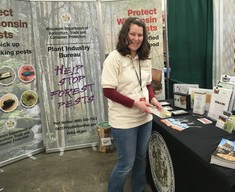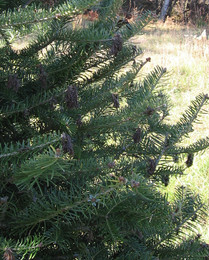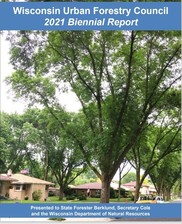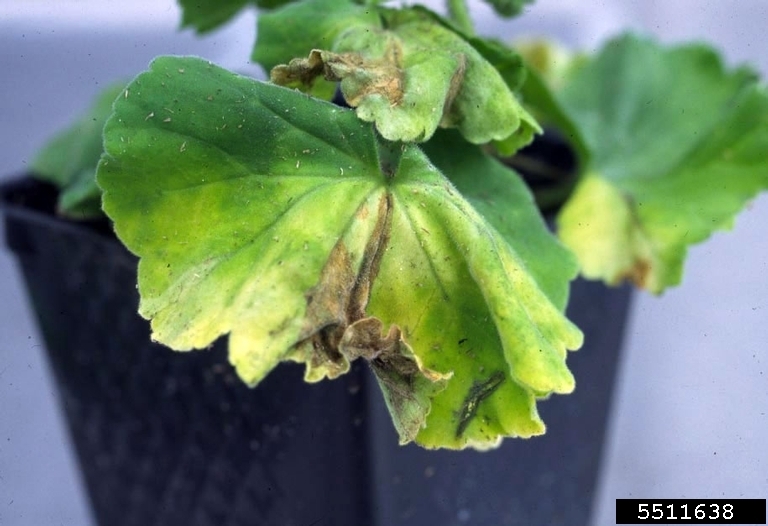 Dear Wisconsin nurseries, Christmas tree growers, and gardeners:
Winter in Wisconsin is such a great time of the year to visit tradeshows, renew outstanding nursery licenses, review highlights from the past season, and learn about pests to be watching for when the snow melts. Enjoy!
Please send any feedback, questions, or ideas for future e-news updates to datcpnursery@wisconsin.gov.
Having trouble viewing this email? View it as a Web page.

Stop by for a Visit at Upcoming Tradeshows
DATCP's Plant Protection staff will be exhibiting at some upcoming events. Stop by and visit with us, and learn about the latest plant pest and disease issues.
February 11-13, Madison - Wisconsin Garden & Landscape Expo. We’ll be in booths 403 and 404 and giving talks on backyard invasive plant pests and healthy honey bees and native pollinators. PBS Wisconsin hosts this community educational event and fundraiser in partnership with the University of Wisconsin-Madison Horticulture Division of Extension. Details at wigardenexpo.com, and #WIGardenExpo.
February 20-22, Green Bay - Wisconsin Arborist Association (WAA) and DNR Annual Conference. DATCP staff will help out with the Urban Forestry Council trivia and awards and have information about our firewood certification program, nursery licensing, and emerging plant pests like spotted lanternfly at our exhibit booth. Attendance is limited to fewer than 375 due to COVID-19, and no walk-ups will be accepted, so register early.
March 2, Pewaukee - Wisconsin Nursery and Landscape Association (WNLA) Spring Start Up. DATCP nursery coordinator Liz Meils will provide an update, along with USDA-APHIS-PPQ specialist Ellen Natzke. We’ll have an exhibit booth highlighting emerging nursery pests. You might even get to meet Vin Vasive!
|

2021 Christmas Tree Inspection Summary
In 2021, 374 Christmas tree growers were licensed with DATCP. DATCP staff inspected 606 fields, with priority given to growers shipping out of state or requesting a plant health certificate. Lymantria dispar (formerly known as gypsy moth) life stages were found in or adjacent to 43 Christmas tree fields. Growers with L. dispar finds were issued restriction letters prohibiting the movement of Christmas trees near egg mass finds from leaving the L. dispar quarantine area. Other top abiotic issues, pest and diseases found in Christmas trees were: frost damage (279), balsam twig aphid (131), deer damage (77), balsam gall midge (74), broom rust of fir (66), and lirula needlecast (60).
A few changes were implemented this season. Inspectors utilized mobile apps to collect field inspection data. Completed inspections were emailed or mailed to growers, substantially reducing turnaround time for transmitting inspection results. A follow-up survey was sent to growers to assess their satisfaction and experience receiving the inspection reports electronically, and 86 of 314 growers responded, with 63% indicating that the new system added value and/or increased efficiency.
Regulated pests of concern have also changed with the USDA deregulation of pine shoot beetle (PSB) and DATCP focusing on preventing elongate hemlock scale (EHS) from becoming established in Wisconsin. DATCP staff will submit draft language that proposes adding a new quarantine for EHS and removing the PSB quarantine to the DATCP Board on March 3, 2022, for review and potential inclusion in ATCP 21. Public hearings, if approved, are anticipated in early April.
74 Christmas tree lot inspections were conducted from mid-November to Christmas. EHS was detected at six lots on Christmas tree or wreath material from out-of-state sources. Pest abatement orders were issued to two big box stores with multiple locations requiring the removal and destruction of material infested with EHS.
|

Learn About Wisconsin’s Urban Forestry Council in 2021 Biennial Report
The purpose of the Wisconsin Urban Forestry Council (WI UFC) is to advise state forester, currently Heather Berklund, and the Wisconsin DNR on the best ways to preserve, protect, expand and improve Wisconsin’s urban and community forest resources. Their 27 members, who serve after being approved by DNR Secretary Preston Cole, hail from all over Wisconsin and represent a wide array of stakeholders, including municipal and utility foresters; medical and higher education professionals; nursery staff; environmental groups; public works, planning and parks staff; landscape architects; the Wisconsin Arborist Association (WAA); the Urban Wood Network Wisconsin; the League of Wisconsin Municipalities; and partner agencies like WisDOT and DATCP.
The UFC advances urban forestry through six issue groups to increase urban wood utilization; improve workforce development opportunities; and raise awareness about links between urban forests and public health and stormwater mitigation. The UFC occasionally meets with the USFS and other states in our region to identify areas of potential collaboration and participate in the creation and implementation of Wisconsin’s statewide forest action plan.
The UFC is always looking for new members, especially as they strive to expand diversity in a way that will better position them to address climate change and environmental justice issues. They also welcome awards nominations and help publicizing the DNR’s urban forestry grants.
Learn more about what they do by reading the 2021 Biennial Report, which is posted on the UFC’s website and includes key recommendations for the DNR about maintaining and expanding urban forestry funding, staff and grants and allowing storm water credits for planting and maintaining urban trees to count in water-permitting programs. Please check the report and contact them if you want to get involved.
|

Avoid Late Fees by Renewing your Nursery License on Time
Anyone with a current nursery grower, nursery dealer, and/or Christmas tree grower license expiring on February 20, 2022, should have received a paper expiration notice and renewal form by mail. You can avoid paying the 20% late fee (or $5, whichever is greater) on each license by renewing before the deadline. We thank licensees who have already renewed.
You can renew online using the MyDATCP portal. A short video tutorial is available if you need a refresher on how to use MyDATCP. Be sure to check and update field locations and nursery stock sources when you renew your license(s).
Contact us to cancel or inactivate any license(s) you do not plan to renew.
Questions? Email DATCPnursery@wi.gov or call (608) 224-4574. For more information, visit the Nursery and Christmas tree licensing webpage.
|
 Margery Daughtrey, Cornell University, Bugwood.org
Pathogen Highlight: Ralstonia solanacearum Race 3 Biovar 2 on Geraniums
Ralstonia solanacearum race 3 biovar 2, which causes southern wilt on geraniums and potato brown rot on potatoes, is a bacterial pathogen of serious concern to the United States and has been labeled by the USDA as a select agent. R. solanacearum R3Bv2 is not known to occur in the United States or Canada. In countries where it does occur, it causes significant plant losses of infected potato, tomato, pepper, eggplant and geranium crops.
In 2020, R. solanacearum R3Bv2 was detected in the US on imported geranium cuttings from Guatemala. All plants received from that facility, and any plants comingled or exposed to the geraniums at receiving greenhouses, were removed from sale and destroyed. This event affected 44 states and more than 650 greenhouses. Wisconsin nursery inspectors collected more than 2,100 plants at 28 greenhouses. Eradication efforts are believed to have been successful.
This spring, as you scout your greenhouses, be on the watch for symptoms of southern wilt on geraniums. Symptoms start as yellowing and wilting of lower leaves, leading to upward curling of leaf margins. Wilting leaves often show wedge-shaped areas of yellowing that eventually turn necrotic and brown. In severe and late-stage cases the plant may suffer stem collapse, desiccation, and death.
Early detection is key to protecting Wisconsin’s agriculture. If you suspect geraniums at your nursery may be infected with R. solanacearum R3Bv2 contact DATCP’s nursery program at DATCPnursery@wisconsin.gov or (608) 224-4572.
Learn More
For more information about Wisconsin's Nursery and Christmas Tree Programs, visit DATCP's Nursery and Christmas Tree Program webpage.
Read past issues of What's Growing On?
Division of Agricultural Resource Management | Bureau of Plant Industry
Having trouble viewing this email? View it as a Web page.
|